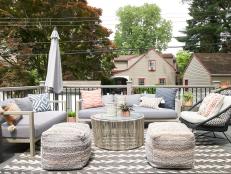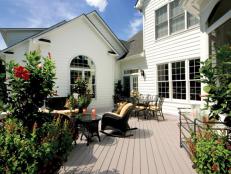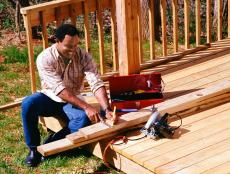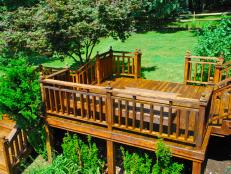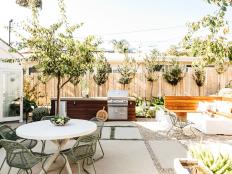Decks & Patios: Getting Started
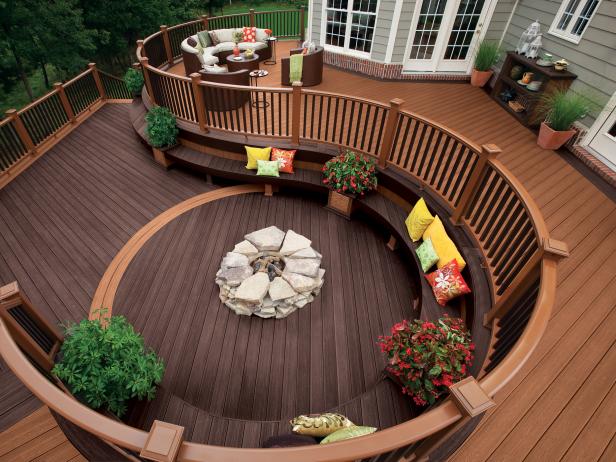
Trex
Options are vast and varied when it comes to decks and patios. Location, design, materials, maintenance—and of course, the budget—are all important issues to understand and work through. Here are some questions and ideas to help you get the planning process under way.
Location. Will the deck or patio sit in full sun, a partially shaded spot, or near a pool? Are there any related maintenance concerns—drainage, for example? What type of access should the space afford to the house? How will the deck or patio relate to neighboring homes? Be sure to ferret out and factor in these different considerations, along with your personal goals and preferences for how the feature should look and function.
Design. In general, a deck or patio should fit the style of the house. In a period home, that might translate into paving and stone walls, while a modern home could accommodate sleek decking. Likewise, accessories, plants and enhancements—minimalist or colorful, leafy and jungly, built-in seating or fire pits—will also contribute to the design.
Deck Design Ideas
See All PhotosMaterials and maintenance. Materials for outdoor spaces encompass a variety of synthetic and natural products, each with its own particular upkeep requirements. The elements can damage natural wood decks, for example, and they require regular attention (paint or stain, plus a clear coat of oil or water-based sealant). In terms of value with low maintenance, a long-wearing paver patio may be an attractive option. Again, research and planning are essential in selecting materials that match up with expectations.
Budget. Use the questions and requirements that arise when siting and designing a deck or patio to create a realistic "must-have" vs. "nice-to-have" list. That list will, in turn, guide the budget. If things don't match up, revisit the choices and make compromises. Cost savings may often be found by simply swapping one material for another (natural wood instead of composite deck boards, for example), or by taking on some of the labor yourself. A resourceful and flexible approach can help ensure a happy end result and good return on the investment.
Permits. The last thing anyone wants is to invest in a beautiful outdoor space, only to find out it must be ripped up because there was no building permit. There are codes and safety requirements in most towns if the deck is higher than 18 inches or larger than 100 square feet. Also, homeowners' associations often have covenants governing outdoor structures and additions. Be sure to cover the bases before construction begins.






